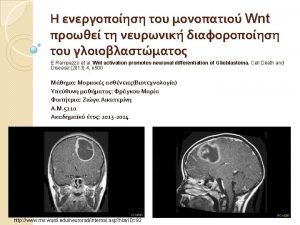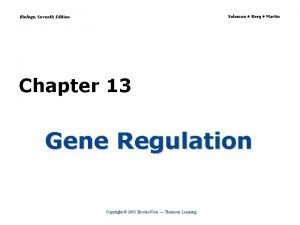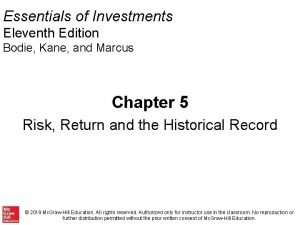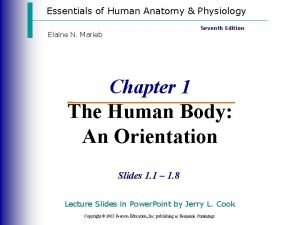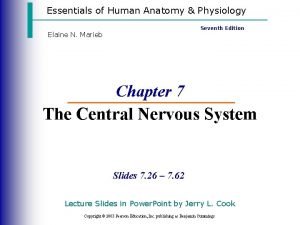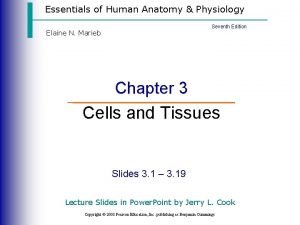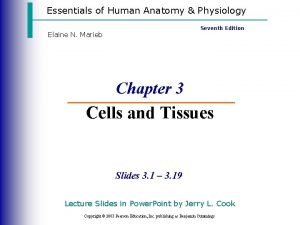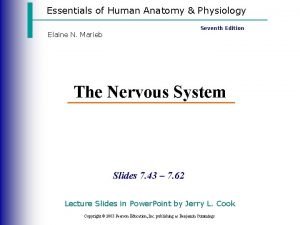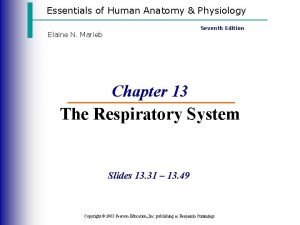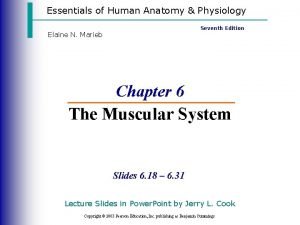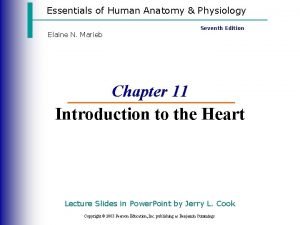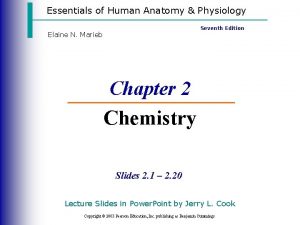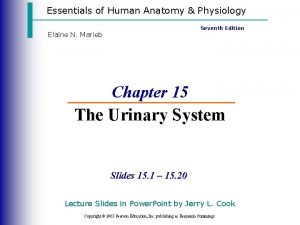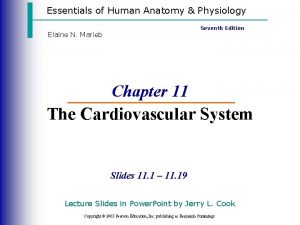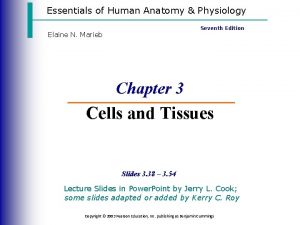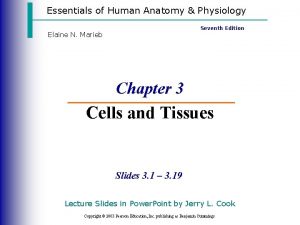Essentials of Human Anatomy Physiology Seventh Edition Elaine

















- Slides: 17

Essentials of Human Anatomy & Physiology Seventh Edition Elaine N. Marieb The Nervous System Slides 7. 63 – 7. 75 Lecture Slides in Power. Point by Jerry L. Cook Copyright © 2003 Pearson Education, Inc. publishing as Benjamin Cummings

Spinal Nerves · There is a pair of spinal nerves at the level of each vertebrae for a total of 31 pairs · Spinal nerves are formed by the combination of the ventral and dorsal roots of the spinal cord · Spinal nerves are named for the region from which they arise Copyright © 2003 Pearson Education, Inc. publishing as Benjamin Cummings Slide 7. 63

Spinal Nerves Figure 7. 22 a Copyright © 2003 Pearson Education, Inc. publishing as Benjamin Cummings Slide 7. 64

Anatomy of Spinal Nerves · Spinal nerves divide soon after leaving the spinal cord · Dorsal rami – serve the skin and muscles of the posterior trunk · Ventral rami – forms a complex of networks (plexus) for the anterior Figure 7. 22 b Copyright © 2003 Pearson Education, Inc. publishing as Benjamin Cummings Slide 7. 65

Examples of Nerve Distribution Figure 7. 23 Copyright © 2003 Pearson Education, Inc. publishing as Benjamin Cummings Slide 7. 66

Autonomic Nervous System · The involuntary branch of the nervous system · Consists of only motor nerves · Divided into two divisions · Sympathetic division · Parasympathetic division Copyright © 2003 Pearson Education, Inc. publishing as Benjamin Cummings Slide 7. 67

Differences Between Somatic and Autonomic Nervous Systems · Nerves · Somatic – one motor neuron · Autonomic – preganglionic and postganglionic nerves · Effector organs · Somatic – skeletal muscle · Autonomic – smooth muscle, cardiac muscle, and glands Copyright © 2003 Pearson Education, Inc. publishing as Benjamin Cummings Slide 7. 68 a

Differences Between Somatic and Autonomic Nervous Systems · Nerurotransmitters · Somatic – always use acetylcholine · Autonomic – use acetylcholine, epinephrine, or norepinephrine Copyright © 2003 Pearson Education, Inc. publishing as Benjamin Cummings Slide 7. 68 b

Comparison of Somatic and Autonomic Nervous Systems Copyright © 2003 Pearson Education, Inc. publishing as Benjamin Cummings Figure 7. 24 Slide 7. 69

Anatomy of the Sympathetic Division · Originates from T 1 through L 2 · Ganglia are at the sympathetic trunk (near the spinal cord) · Short pre-ganglionic neuron and long postganglionic neuron transmit impulse from CNS to the effector · Norepinephrine and epinephrine are neurotransmitters to the effector organs Copyright © 2003 Pearson Education, Inc. publishing as Benjamin Cummings Slide 7. 70

Sympathetic Pathways Figure 7. 26 Copyright © 2003 Pearson Education, Inc. publishing as Benjamin Cummings Slide 7. 71

Anatomy of the Parasympathetic Division · Originates from the brain stem and S 1 through S 4 · Terminal ganglia are at the effector organs · Always uses acetylcholine as a neurotransmitter Copyright © 2003 Pearson Education, Inc. publishing as Benjamin Cummings Slide 7. 72

Anatomy of the Autonomic Nervous System Figure 7. 25 Copyright © 2003 Pearson Education, Inc. publishing as Benjamin Cummings Slide 7. 73

Autonomic Functioning · Sympathetic – “fight-or-flight” · Response to unusual stimulus · Takes over to increase activities · Remember as the “E” division = exercise, excitement, emergency, and embarrassment Copyright © 2003 Pearson Education, Inc. publishing as Benjamin Cummings Slide 7. 74 a

Autonomic Functioning · Parasympathetic – housekeeping activites · Conserves energy · Maintains daily necessary body functions · Remember as the “D” division - digestion, defecation, and diuresis Copyright © 2003 Pearson Education, Inc. publishing as Benjamin Cummings Slide 7. 74 b

Development Aspects of the Nervous System · The nervous system is formed during the first month of embryonic development · Any maternal infection can have extremely harmful effects · The hypothalamus is one of the last areas of the brain to develop Copyright © 2003 Pearson Education, Inc. publishing as Benjamin Cummings Slide 7. 75 a

Development Aspects of the Nervous System · No more neurons are formed after birth, but growth and maturation continues for several years · The brain reaches maximum weight as a young adult Copyright © 2003 Pearson Education, Inc. publishing as Benjamin Cummings Slide 7. 75 b
 Human anatomy and physiology seventh edition marieb
Human anatomy and physiology seventh edition marieb Uterus perimetrium
Uterus perimetrium Anatomy and physiology edition 9
Anatomy and physiology edition 9 Chapter 1 introduction to human anatomy and physiology
Chapter 1 introduction to human anatomy and physiology Holes essential of human anatomy and physiology
Holes essential of human anatomy and physiology Medial and lateral
Medial and lateral Chapter 2 human reproductive anatomy and physiology
Chapter 2 human reproductive anatomy and physiology Chords rule in dbms
Chords rule in dbms Principles of information systems
Principles of information systems Molecular biology of the cell seventh edition
Molecular biology of the cell seventh edition Biology seventh edition
Biology seventh edition Human anatomy fifth edition
Human anatomy fifth edition Human anatomy fifth edition
Human anatomy fifth edition Network security essentials 5th edition pdf
Network security essentials 5th edition pdf Business essentials 12th edition
Business essentials 12th edition Essentials of investments 11th edition
Essentials of investments 11th edition Understanding business 12th edition chapter 1
Understanding business 12th edition chapter 1 Essentials of sociology 5th edition
Essentials of sociology 5th edition









